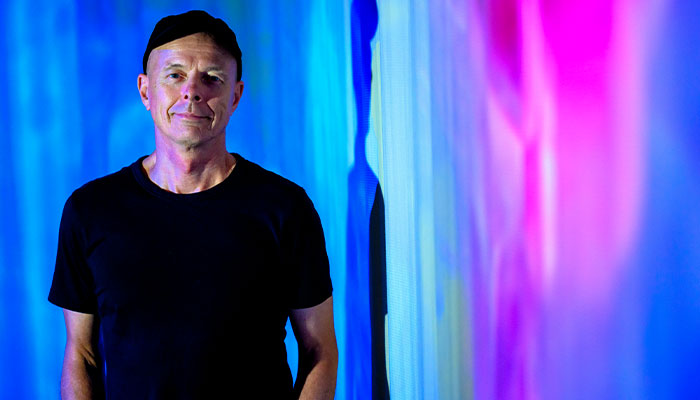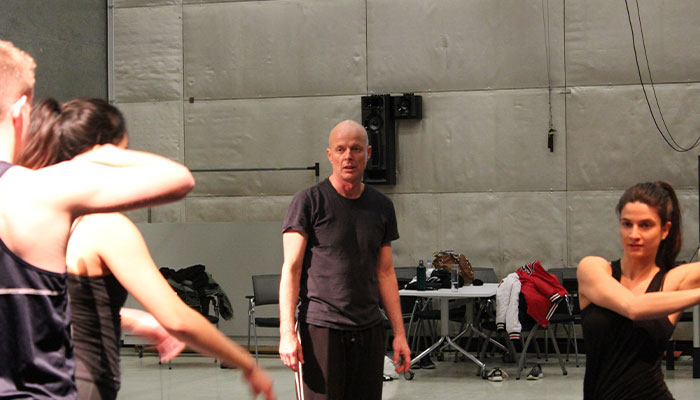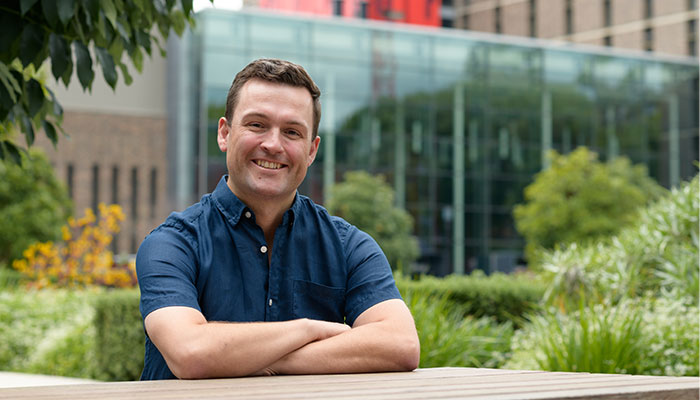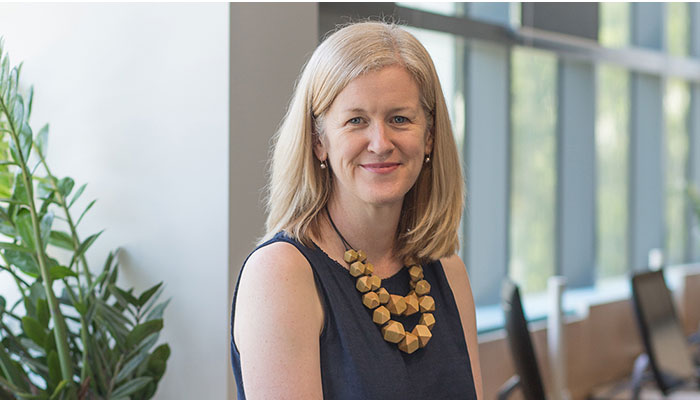
Teacher: Dr Jon Burtt (pictured) is a Senior Lecturer in the Department of Media, Communications, Creative Arts, Language, and Literature (MCCALL). An artist and scholar, with a background in dance, theatre and circus studies, Jon teaches the performing arts and entertainment industries major, and related undergraduate Masters courses.
Groundwork: Jon has performed in and directed works that have toured Australia and Asia. His published research examines social circus, circus training and creative practice. His Master’s thesis was an investigation into the traditional practice of rope and pole Mallakhamb in India. His doctorate was based on new cognitive approaches to circus training at the National Circus School in Montreal where he was researcher-in-residence.
Gold stars: A Higher Education Academy Fellow, Jon was recently awarded an Australian Academy of Humanities fellowship for his research on circus for social change. His book, Contemporary Circus, co-authored with Katie Lavers and Louis Patrick Leroux, was published in 2019. In 2016, Jon was recognised with a Vice Chancellor’s Citation for Outstanding Contribution to Student Learning.
How his students describe him: Caring, goes above and beyond; big on communication, teamwork, on teaching life skills and self-trust; creates an environment that celebrates difference; is passionate about performance and research.
What Jon says:
Performing and teaching intersect in unexpected ways. My creative background as a performer, choreographer and director inform how I teach and what I teach. Directing my own arts company, I had to be across all aspects of the business, from the creation of new work to managing people, and being involved with financial, marketing and legal aspects. I now draw on that industry experience to teach students how to develop the extended skill set you need to flourish in the creative industries.
Learning is a creative practice. For learners to be engaged, teachers need to be creative. They need to be able to adapt, innovate, and be open and responsive to their students. Just as a creative artist collaborates with others to develop new work, a teacher collaborates with students to create unique learning experiences.

Class act: Students of Dr Jon Burtt say he goes above and beyond.
Students need to be prepared for not just one career but several. That means finishing university with an adaptable skill set. Academic skills are important but, increasingly, students need to think of themselves not just as someone working for somebody else but as potential entrepreneurs who can come up with an idea, get together with a team of people through peer networks, perhaps develop a prototype of a new product or service, get funding, and start a flourishing business.
The major I teach is an example of how Macquarie has adapted through Covid. It has transformed from a creative, practice-based major with specific dance, circus and theatre units, to one that balances creative practice and process with entrepreneurship, arts and event management.
Traditional ways of working have been greatly impacted by Covid. Two years ago, students had very different expectations. Now, someone who trained as a dancer or a theatre artist can’t expect to walk straight into a traditional job with an arts company. What I strive to impress is: “You can use the creative skills you have spent years developing but you need to apply them in different ways.”
However big classes become, each student needs to feel they have your attention, that you really 'see' them.
Let’s say I have a student from a circus background. A trained circus artist understands risk and teamwork. So I might ask a student taking a creative entrepreneurship unit, for example, to think about how risk and teamwork are essential elements of any creative start-up, and how skills cultivated in circus training can be harnessed in a business undertaking or team project.
The idea of really “seeing” my students has become central to my teaching practice. This idea I credit to my colleague, film-maker and scholar Dr Karen Pearlman. It speaks to the idea of teaching that is inclusive of everyone in the class. This is particularly important now because our class sizes are growing and Covid has made many young people more isolated. But however big classes become, each student needs to feel they have your attention, that you really “see” them.
Online teaching has allowed more space for students who hold back. It might have something to do with how students “curate” the way they present themselves visually and spatially. They’re in their own space not in an institutional space; that can make some students more at ease and willing to speak up.
I’m a big fan of feedback. Feedback is so important: the type of feedback, when to give it, when to allow space for the student to self-regulate their own feedback, when to switch to peer-to-peer feedback, how to get students to provide feedback in constructive and creative ways. Often overlooked by teachers is the value of eliciting feedback from students about their learning experience. Knowing how students feel about their learning allows teachers to develop a real sense of co-creating the learning with them.
I would like to think my students view me as … a mentor, but also as someone who values their opinions and feedback and is prepared to respond to their needs.



